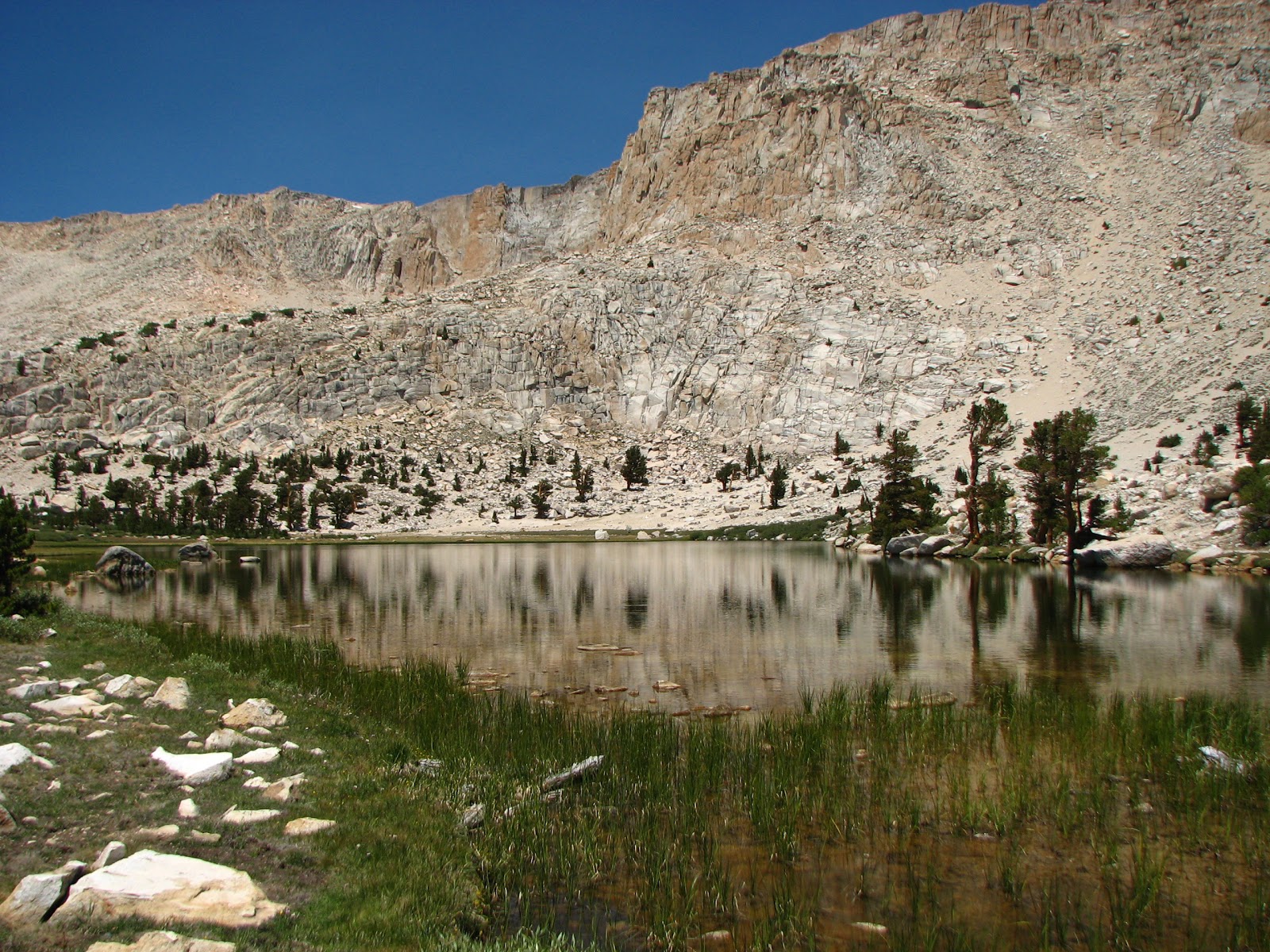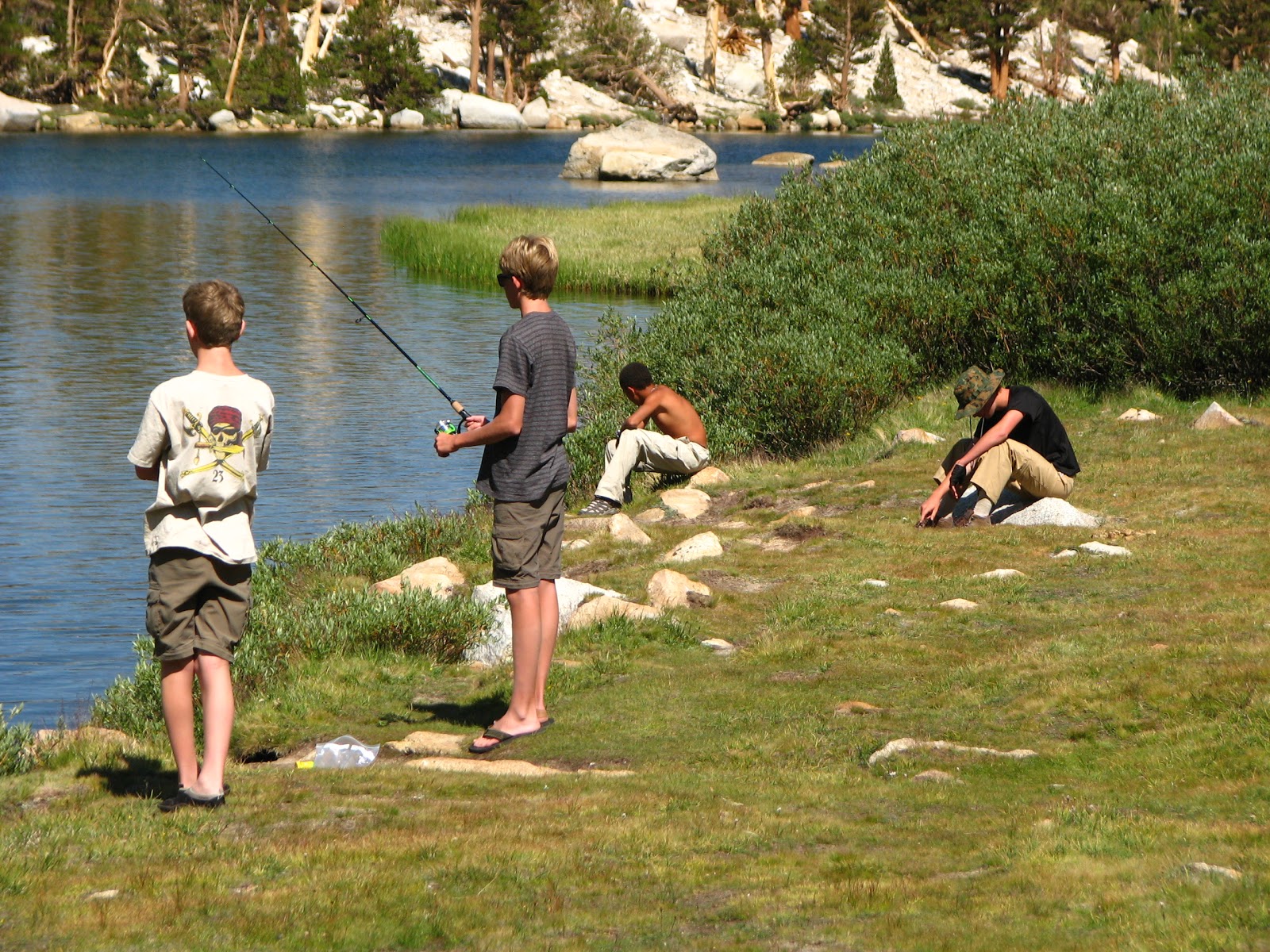At Soldier Lake
| Terrain map showing our start (1) and end points(2) for the day. New Army pass is the red maker ("A"). The hardest portion of the day's hike would be the 1.6 miles (and about 1200 vertical feet) from Long Lake to New Army. |
The next morning we were up with the sun. Despite best intentions, we didn't hit the trail until about 08:15. We still needed to get familiar with what it meant to get up, take down the tents, eat breakfast, and finish packing our backpacks. And some of the boys are really not "morning people."
While we ate breakfast I was sneaking looks at John C. to see how he was doing. He actually seemed to relapse a bit after eating, and was complaining of stomach pains. I sat with him and gave him a quiet "rah-rah" speech and told him that I thought he could make it up and over the pass, but let him know that we'd be able to revisit as we went upward.
We finished packing up all our gear, including distributing most of John's gear amongst the other Scouts and set off at a very deliberate pace. I was determined that we'd take it slow, even if that made some of the stronger Scouts a little impatient. And I was feeling the altitude myself.
Despite our worries about John, we made it up and over New Army Pass ("A" above) from our campsite at Long Lake (1). Although only about 1.6 miles along the trail, we ascended nearly 1200 ft -- according to Google Earth, that's an average slope of nearly 14 degrees. And since we were starting at about 11,160 ft above sea level, the air was pretty thin.
Our first milestone along the way was High Lake, nestled snugly up against a steep slope/cliffs (700-800 ft high) to the north. We took a break and ate a snack before pressing onward and upward.
 |
| High Lake and adjacent cliffs |
By 10:30 we estimated we were slightly more than 2/3 of the way up the pass and took a break. It was a little nerve-wracking for me since the boys were not always as careful with where they placed their equipment, or whether they dislodged any rocks. The slope was quite steep -- if a pack got loose here, it could easily tumble a couple hundred feet down.
 |
| John, Gage, and Nathan as we overlook Long Lake(nearest) and Cottonwood Lake #1(farthest). |
 |
| The group at New Army Pass |
 |
| Sam absorbing the view. Mt Langley is the massive peak filling most of the upper part of the frame. |
The only downside of the spot was its distance from the lake and the outlet stream that we depended on for water. But we sent a few of the boys down to pump water for the group. And that's when our troubles with water filters would begin (and persist through the end of the trip). After waiting a long time for the water party to return, I took a walk down to see what was happening. One of the three filters the boys had brought (all Katydyn Hiker Pros) had broken - somehow the outlet attachment portion had broken off the main body of the pump. And the other pump they were using was very very slow. Sure enough, its filter was heavily contaminated. I cursed the Scouts who'd used it last month for not servicing it, and we swapped the filter cartridge with the broken filter. I figured that would fix the problem since the broken filter was brand new (with a new cartridge). That seemed to fix things.
After dinner (Mac and Cheese for them, Gary and I had pasta with Thai peanut sauce) we discussed the next day's plan. Given that everyone seemed OK (if a bit tired in some cases) I'd decided we should pack up and move the next day to Sky Blue Lake. The option was to do this as a day hike, but I was convinced that once we got there, we'd want to stay. There were a few grumbles but that seemed to work for everyone. Since we only had about 4 miles to cover (although without a marked trail), I figured we could let everyone sleep in a bit.
It looked to me like the trip was working out quite well. We'd made it through a major challenge and were ready to take on the rest of the trip.










